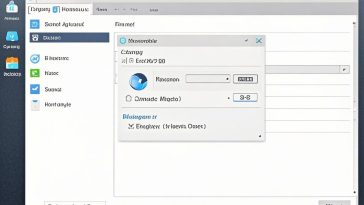Posters are a powerful medium for conveying information, ideas, and research findings in a visually compelling and concise manner. Whether you’re presenting at a conference, showcasing a project, or promoting an event, a well-designed poster can captivate your audience and leave a lasting impression. While there are dedicated poster design software options available, Microsoft PowerPoint offers a versatile and accessible solution for creating impactful posters right from your computer.
In this step-by-step guide, we’ll explore how to harness the capabilities of PowerPoint to create stunning posters that not only grab attention but also effectively communicate your message.
Section 1: Setting Up the Poster Canvas
Before you dive into the design process, it’s essential to set up the canvas for your poster in PowerPoint.
Choosing the Slide Size
- Open PowerPoint and navigate to the “Design” tab.
- Click on the “Slide Size” button and select “Custom Slide Size.”
- In the “Slide Size” dialog box, enter the desired dimensions for your poster. Common poster sizes include 36″ x 48″ or 48″ x 36″ (landscape or portrait orientation).
- Click “OK” to apply the custom slide size.
Adding Guides and Gridlines
Guides and gridlines are invaluable tools for precise alignment and organization of your poster elements.
- Go to the “View” tab and click on the “Guides” button to enable guides.
- Adjust the guide settings by clicking on the “Guides” button again and selecting “Gridlines” or “Grid Settings” to customize the spacing, color, and other options.
Creating a Background
A well-designed background can set the tone for your poster and enhance its overall visual appeal.
- Select the slide by clicking on the slide area.
- Go to the “Design” tab and choose a solid color or gradient fill from the “Background Styles” gallery.
- Alternatively, you can insert a background image or texture by navigating to the “Insert” tab, clicking “Pictures,” and selecting the desired image file.
Section 2: Organizing the Poster Content
With the canvas set up, it’s time to start arranging and organizing the content for your poster.
Defining the Poster Sections
Most posters follow a standard structure, including sections like:
- Title
- Introduction
- Methods
- Results
- Conclusion
- References
You can use PowerPoint’s placeholders or insert text boxes for each section.
Arranging and Aligning Content
- Position and align the text boxes or placeholders using the alignment tools on the “Home” tab or the gridlines as a guide.
- Utilize the “Arrange” tools to layer and distribute elements evenly.
Incorporating Visual Elements
Visual elements like images, charts, diagrams, and graphs can help convey your message more effectively.
- Insert visuals by navigating to the “Insert” tab and selecting the appropriate option (e.g., “Pictures,” “Charts,” “SmartArt”).
- Resize and position the visuals strategically within the poster layout.
Section 3: Formatting and Styling the Poster
Once the content is in place, it’s time to apply consistent formatting and styling to your poster.
Choosing Fonts and Text Styles
- Select the text you want to format.
- Go to the “Home” tab and choose appropriate fonts and styles for headings and body text.
- Apply consistent text formatting (size, color, alignment) throughout the poster.
Using PowerPoint’s Design Templates
PowerPoint offers a variety of built-in design templates that can provide a starting point for your poster design.
- Navigate to the “Design” tab and explore the available templates.
- Select a template that aligns with your branding or theme.
- Customize the template by adjusting colors, fonts, and other elements to suit your needs.
Adding Branding and Visual Identity
Incorporating your branding elements can help reinforce your visual identity and create a cohesive look.
- Insert your organization’s logo or other branding elements using the “Insert” tab.
- Ensure consistent use of brand colors, fonts, and styles throughout the poster.
Section 4: Enhancing the Poster with Advanced Techniques
To take your poster design to the next level, consider incorporating some advanced techniques in PowerPoint.
Creating Columns and Sections
- Use the “Columns” and “Section” tools on the “Home” tab to divide your poster into distinct columns or sections.
- Adjust column widths and spacing to achieve the desired layout.
Adding Borders and Shapes
Borders and shapes can help separate and emphasize different content areas within your poster.
- Insert borders or shapes using the “Shapes” tool on the “Insert” tab.
- Customize the border styles, line colors, and shape fills to complement your design.
Incorporating Multimedia Elements
PowerPoint allows you to embed multimedia elements like videos, animations, or interactive components, which can add an engaging dimension to your poster.
- Insert videos or animations by navigating to the “Insert” tab and selecting the appropriate option.
- Consider linking to external resources or websites by inserting hyperlinks.
Section 5: Preparing for Printing and Sharing
Once your poster is complete, it’s time to prepare it for printing and sharing.
Checking for Consistency and Readability
- Review your poster thoroughly to ensure consistency in layout, formatting, and visual elements.
- Double-check that all text and visuals are legible and easy to read from a distance.
Printing the Poster
- Go to the “File” menu and select “Print.”
- In the “Print” dialog box, choose the appropriate print settings, such as size, quality, and orientation.
- Select a suitable printer or print service that can accommodate the poster size.
Saving and Sharing the Poster
- To share your poster electronically or on social media, export it as a PDF or image file by selecting “Export” or “Save As” from the “File” menu.
- Choose the desired file format (e.g., PDF, PNG, JPEG) and adjust the export settings as needed.
Conclusion
Creating impactful posters in PowerPoint is a straightforward process that can yield impressive results. By following the steps outlined in this guide, you can harness the powerful design tools and features within PowerPoint to create visually compelling and informative posters.
Remember, the key to a successful poster design lies in striking the right balance between visual appeal and effective communication. Experiment with different layouts, color schemes, and design elements to find the perfect combination that best represents your message and captivates your audience.
Don’t hesitate to explore PowerPoint’s advanced features, such as multimedia integration and interactive elements, to take your poster design to new heights. These techniques can transform your poster into an engaging and immersive experience that leaves a lasting impression.
If you have any questions or need further assistance, feel free to reach out to our community or seek additional resources online. Happy designing, and may your posters captivate and inspire!






